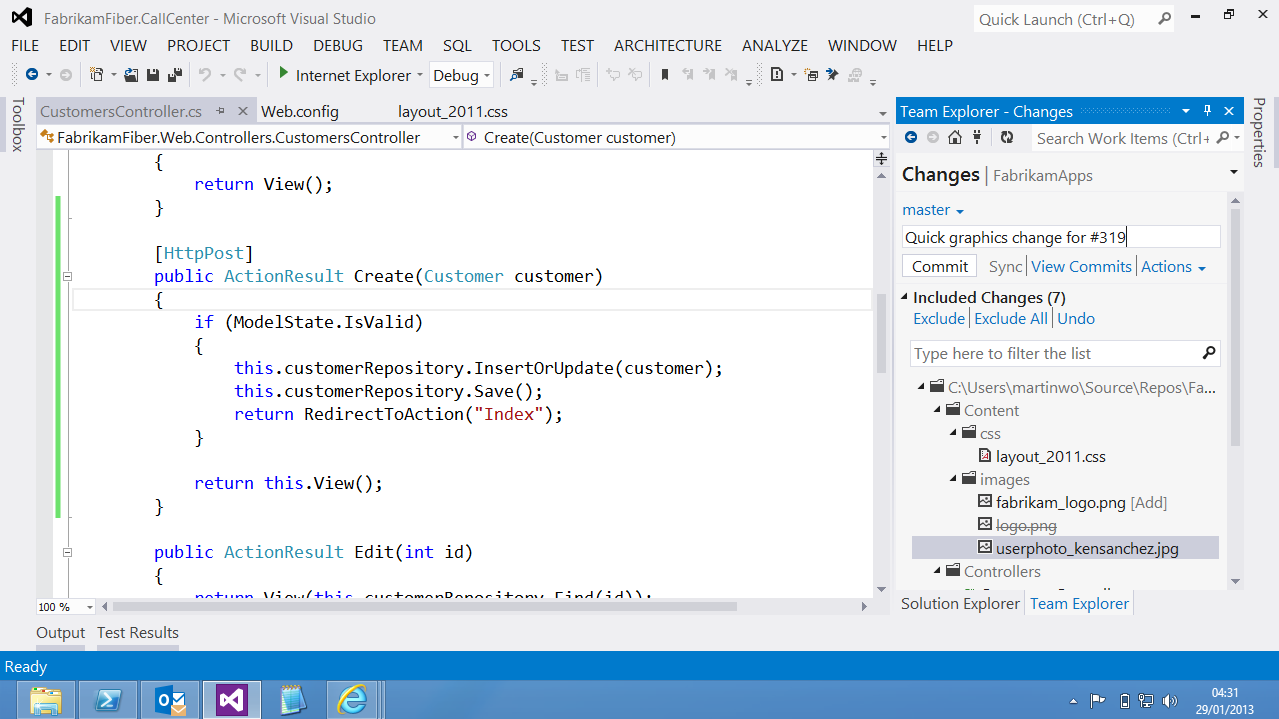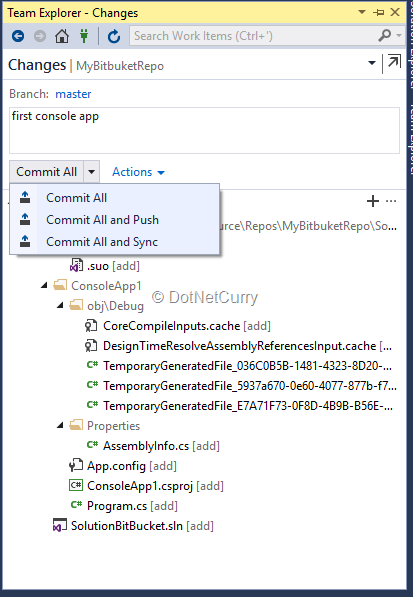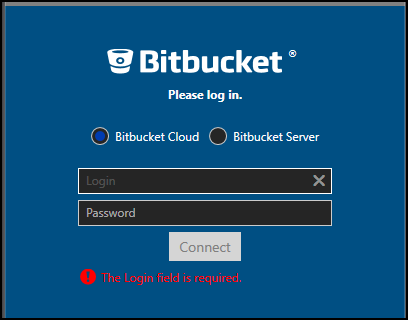

- #BITBUCKET VISUAL STUDIO PLUGIN HOW TO#
- #BITBUCKET VISUAL STUDIO PLUGIN CODE#
- #BITBUCKET VISUAL STUDIO PLUGIN FREE#
To help you focus on your Git repository, Visual Studio has a Git Repository window, which is a consolidated view of all the details in your repository, including local and remote branches and commit history. Visual Studio includes powerful repository browsing and collaboration features that eliminate the need to use other tools. For example, you might need to get a good picture of what your team has been working on, or copy a commit from a different branch, or just clean-up your outgoing commits. However, there are times when it makes more sense to focus on your Git repository. To learn more about managing Git network operations in Visual Studio, refer to the Fetch, pull, push, and sync page. If you are working in a team or if you are using different machines, you will also need to continually fetch and pull new changes on the remote repository.

To contribute these changes to a remote repository, you must push those local commit(s) to a remote. Git is a distributed version control system, meaning that all the changes made so far are local only changes. To learn more about making a commit in Visual Studio and to better understand file states in Git, refer to the Make a commit page. Once you create a new branch and switch to it, you can start working by changing existing files or by adding new ones and then committing our work to the repository.
#BITBUCKET VISUAL STUDIO PLUGIN HOW TO#
Learn how to create a branch from Visual Studio. The recommended Git workflow uses a new branch for every feature or fix that you work on. If you or your team works on multiple features at the same time, or if you'd like to explore ideas without affecting your working code, branching is very helpful.
#BITBUCKET VISUAL STUDIO PLUGIN CODE#
You are empowered to multi-task and experiment with your code through branches. Intuitive inner-loop workflowįor your day-to-day Git workflow, Visual Studio provides a seamless way to interact with Git while coding without having you switch away from your code. For more information, see View files in Solution Explorer. Solution Explorer loads the folder at the root of the Git repository, and scans the directory tree for any viewable files like CMakeLists.txt or those with the. When you clone a repository or open a local repository, Visual Studio switches to the Git context. If you're new to Git, the website is a good place to start. If you don’t have a GitHub account, follow these steps to create a GitHub account to use with Visual Studio now. Not only can you add both GitHub and GitHub Enterprise accounts to your keychain, but you can also leverage them just as you do with Microsoft accounts.
#BITBUCKET VISUAL STUDIO PLUGIN FREE#
GitHub offers free and secured cloud code storage where you can store your code and access it from any device, anywhere. If you don't have a Git provider yet, we recommend you start with GitHub since the Git experience in Visual Studio is optimized for this provider. Otherwise, easily create a new Git repository and add your code. If you have a Git repo hosted on a Git provider like GitHub, clone the repository to your local machine.


To get started using Git with Visual Studio: Or, you can work locally with no provider at all. You can work remotely with the Git provider of your choice, such as GitHub or Azure DevOps. Version control with Visual Studio is easy with Git.


 0 kommentar(er)
0 kommentar(er)
